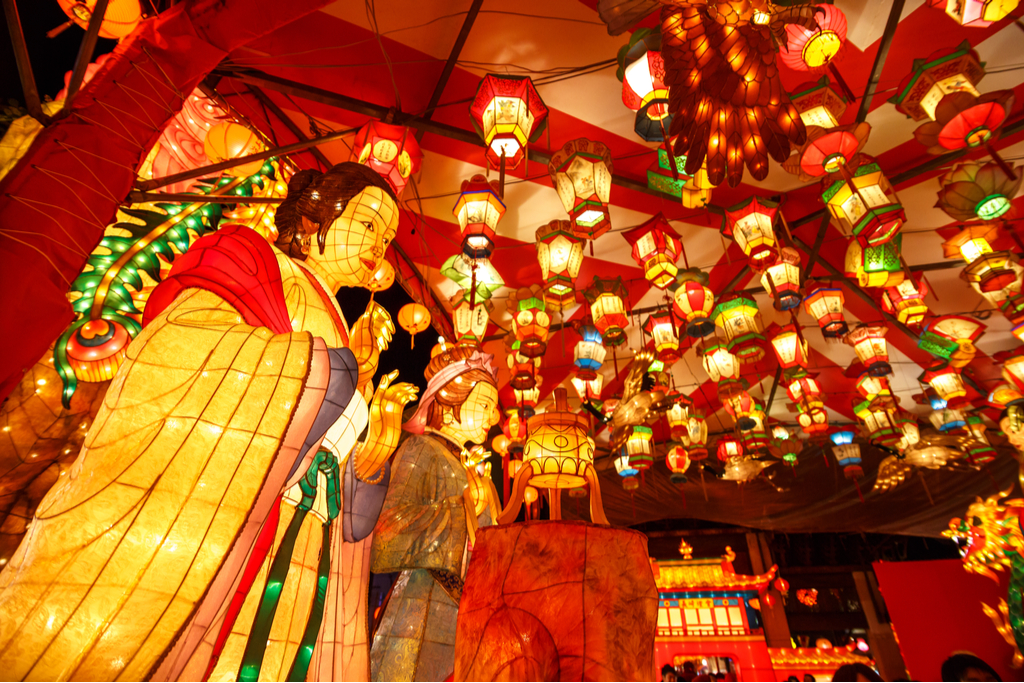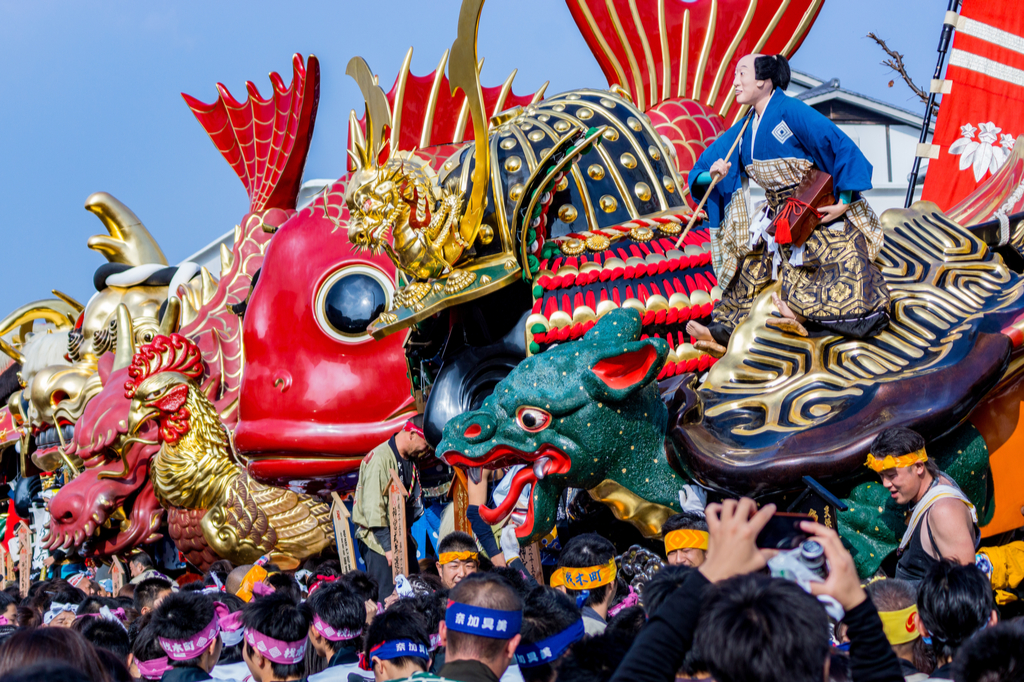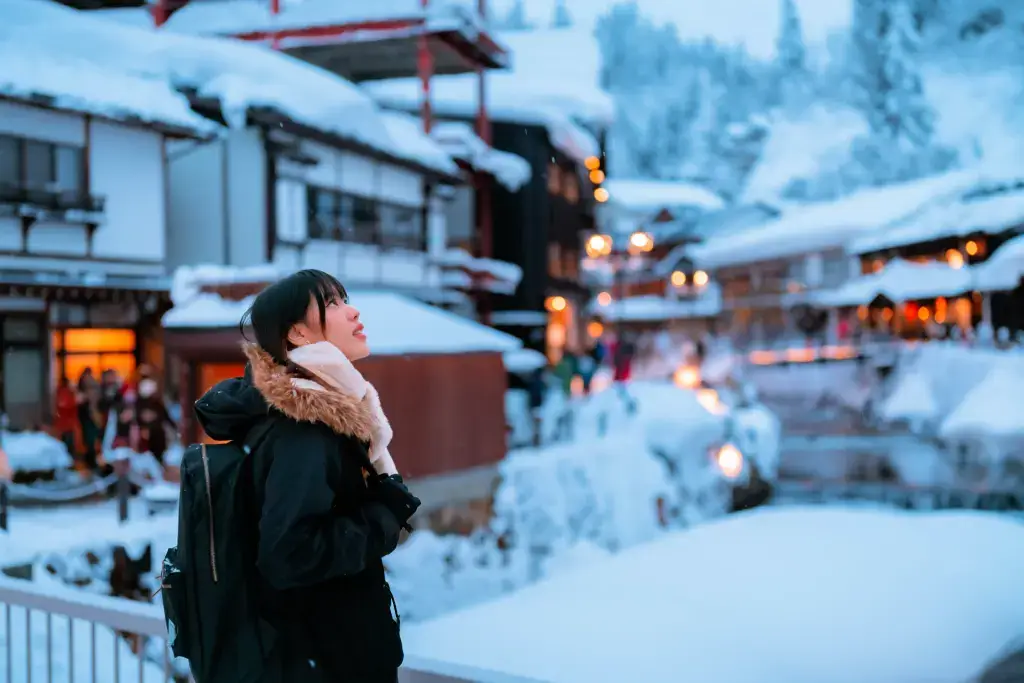festivals, japanese festival
Kyushu Festivals Spotlight: Five Events to Enjoy!
Jenna Wilson
Posted on October 15, 2021
Share:

Kyushu festivals are lively, fun, and vibrant! They range from traditional dances to lanten offerings! Here are our top five! The region is adorned with historical ruins and ancient tombs, some tracing their origins to the early 3rd century BCE.
Kyushu, known for its deep-rooted history and rich culture, stands apart from the rest of Japan geographically and culturally. Eventually, over centuries, the people of Kyushu have nurtured their unique traditions. In various areas, local dialects continue to thrive. Keep reading to discover the top five Kyushu festivals we’ve selected!
1. Nagasaki Lantern Festival (January)
This festival is a harmonious blend of Chinese and Japanese traditions. It originated with Chinese immigrants in the port city of Nagasaki who celebrated it during Chinese New Year. Eventually, in 1994, it extended beyond Shinchi Chinatown, becoming an annual winter tradition embraced by many.

Throughout the festival, beautifully crafted Chinese-style lanterns are on display, with dragon and lion dance performances and a procession to reenact the arrival of Chinese ships in the port of Nagasaki during the Edo Period (1603-1868). Nagasaki Chinatown is also home to Lunar New Year festivals in the winter.
2. Hakata Dontaku (May)
Hakata Dontaku is one of Japan’s oldest festivals, with its roots dating back to 1178 during the Heian Era. Originally called Matsubayashi, it was a celebration by local feudal lords to express gratitude for their benevolence and convey wishes for their continued well-being and success.

In the Meiji Era, it faced a ban due to being considered ‘too extravagant.’ However, it managed to continue after being renamed Hakata Dontaku. The name Dontaku derives from the Dutch word ‘Zondag,’ which means ‘Sunday’ and ‘holiday.’ Presently, this event spans three days. Participants typically don traditional attire, perform dances, and offer their respects to three deities: Fukurokuju (the god of longevity), Ebisu, and his wife Daitoku (the god and goddess of health).
Are you interested in enjoying even more snacks from regions like Kyushu? Check out Sakuraco! Check out Sakuraco! Sakuraco delivers traditional Japanese snacks, sweets, tableware, and more from local Japanese makers right to your door, perfect for a pleasant snack time at home!
3. Hakata Gion Yamakasa (July)
In early July, in Hakata, a district of Fukuoka City, teams practice for an endurance event – a float race. Seven teams represent each neighborhood in the district, and they compete to quickly finish a set route around town while pulling a massive, heavy float.

Usually, Kakiyama floats measure about five meters and weighs about a ton. On July 15th at 1 am, teams gather at the starting line near Kushida Shrine, the festival’s host. The race begins at 5 am, with teams departing every five minutes. They race through narrow streets and tight turns, aiming for speed. Most teams finish in about 30 minutes, cheered on by spectators
4. Yamaga Lantern Festival (August)
The highlight of this beautiful event is the One Thousand Lantern Dance, when hundreds of women dance through the night wearing white yukata (a summer kimono) tied with red sashes and an illuminated paper lantern tied atop their heads.

This festival originates from an ancient story of the Yamaga residents aiding Emperor Keiko (71 to 130 BCE) when he and his followers found themselves lost in the fog. Therefore, the townspeople used pine torches to light the way and guide them back to safety. As a result, this event showcases handcrafted lanterns, some shaped like Japanese landmarks. Afterward, these people offer these lanterns to Omiya Shrine.
5. Karatsu Kunchi (November)
Held yearly in Saga Prefecture, this visually stunning festival celebrates the autumn harvest and has been a tradition for over 400 years. Additionally, the festival is a three-day parade where participants pull enormous floats through the city. The procession starts at Karatsu Shine and ends at Nishino Beach, after which everyone celebrates with music, food, and drinks.

Usually, 14 floats, known as hikiyama, are integral to the festival. These floats specifically showcase various designs, from mythical dragons and killer whales to local heroes. While witnessing them in action during the festival is truly impressive, you can also admire these floats year-round as they are displayed at Karatsu Shrine.
Overall, Kyushu’s vibrant festivals offer a glimpse into the region’s rich cultural tapestry. From Hakata Gion Yamakasa’s fiery exuberance to Nagasaki Kunchi’s graceful elegance, each festival tells a unique story of tradition and community. Which one piques your interest the most? Share your thoughts in the comments below, and let us know which Kyushu festival you’d like to experience firsthand!

Discover authentic flavors with Sakuraco
Get Sakuraco 

Discover authentic flavors with Sakuraco
Get Sakuraco 
Related Articles

Japan Holidays Guide: Relax, Explore, and Delight in Festive Fun
As the year draws to a close, everywhere buzzes with preparations for the holidays, and Japan is no exception. Despite the cold winter weather, you can feel warmth in the scenery, decorations, and festive activities across the country. Let’s explore the unique experiences of holidays in Japan that many people dream of enjoying at least once in their lifetime!

Tokyo Gardens: Five Beautiful Traditional Japanese Gardens to Visit
Tokyo gardens offer a relaxing escape for visitors looking to get a breath of fresh air. However, Tokyo has more than just the typical gardens we see in the West. Let’s explore five traditional Japanese gardens and what makes them unique!

Japan Cruise Spotlight: The Ultimate Guide to Abashiri Icebreaker!
Japan offers a diverse range of cruise experiences, taking in various stunning landscapes. But, in the chilly grip of winter, some voyages pull in adventurers from around the globe. At the forefront of these wintry trips is the Abashiri Icebreaker Cruise in Hokkaido.

Money Envelopes in Japan: Exploring the World of Shugi Bukuro
Attending a Japanese wedding or celebratory event for the first time can be daunting, especially when it comes to gift-giving. Although it may seem complicated, we’ll break it down so that you have nothing to worry about.


